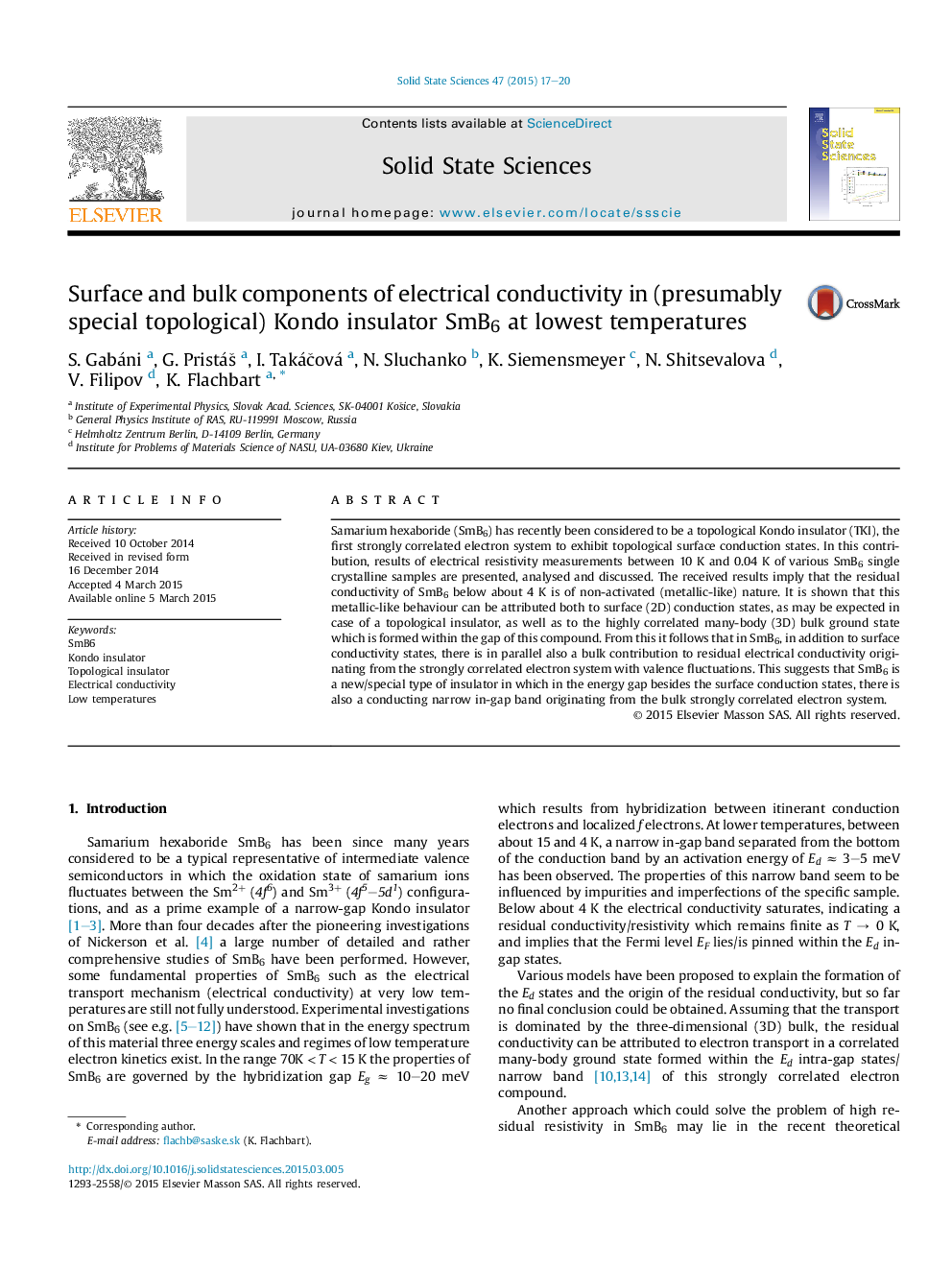| Article ID | Journal | Published Year | Pages | File Type |
|---|---|---|---|---|
| 1504192 | Solid State Sciences | 2015 | 4 Pages |
•Electrical resistivity of SmB6 between 10 K and 0.04 K is analysed and discussed.•The residual electrical conductivity below about 4 K is of metallic-like nature.•It cannot be attributed only to charge transport through surface states.•Charge transport through bulk intra-gap states contributes too.•Thus, two conduction channels seem to provide the residual electrical conductivity.
Samarium hexaboride (SmB6) has recently been considered to be a topological Kondo insulator (TKI), the first strongly correlated electron system to exhibit topological surface conduction states. In this contribution, results of electrical resistivity measurements between 10 K and 0.04 K of various SmB6 single crystalline samples are presented, analysed and discussed. The received results imply that the residual conductivity of SmB6 below about 4 K is of non-activated (metallic-like) nature. It is shown that this metallic-like behaviour can be attributed both to surface (2D) conduction states, as may be expected in case of a topological insulator, as well as to the highly correlated many-body (3D) bulk ground state which is formed within the gap of this compound. From this it follows that in SmB6, in addition to surface conductivity states, there is in parallel also a bulk contribution to residual electrical conductivity originating from the strongly correlated electron system with valence fluctuations. This suggests that SmB6 is a new/special type of insulator in which in the energy gap besides the surface conduction states, there is also a conducting narrow in-gap band originating from the bulk strongly correlated electron system.
Graphical abstractFigure optionsDownload full-size imageDownload as PowerPoint slide
